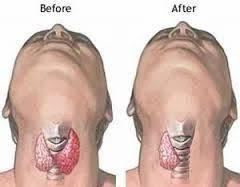Description
Throat Surgery: A Comprehensive Overview
Throat surgery, also known as laryngology surgery, encompasses a wide range of procedures performed to address various conditions affecting the throat, larynx (voice box), pharynx (throat), and surrounding structures. These procedures can range from minimally invasive techniques to major surgeries, depending on the specific diagnosis and the patient's individual needs.
Conditions Treated by Throat Surgery:
Throat surgery is used to treat a diverse array of conditions, including:
- Vocal cord disorders: Such as nodules, polyps, cysts, paralysis, and cancer. Surgery may involve removing lesions, repairing damaged vocal cords, or injecting fillers to restore vocal function.
- Laryngeal cancer: Surgical removal of cancerous tissues, potentially including partial or total laryngectomy (removal of the larynx). This often involves reconstructive surgery to restore swallowing and breathing functions.
- Pharyngeal cancer: Surgical resection of cancerous tumors in the pharynx, often requiring complex reconstructive techniques.
- Sleep apnea: Procedures like uvulopalatopharyngoplasty (UPPP) to remove excess tissue in the upper airway, improving breathing during sleep.
- Swallowing disorders (dysphagia): Surgical interventions to address anatomical issues causing difficulty swallowing, such as cricopharyngeal myotomy or esophageal dilation.
- Goiters: Surgical removal of an enlarged thyroid gland.
- Laryngomalacia: Surgery to correct a floppy epiglottis in infants, improving breathing.
- Tracheal stenosis: Procedures to widen a narrowed trachea (windpipe).
- Benign tumors: Removal of non-cancerous growths in the throat.
Types of Throat Surgery Procedures:
The specific surgical technique employed will depend on the diagnosis and individual circumstances. Common procedures include:
- Microlaryngoscopy: A minimally invasive procedure using a small scope to examine and treat vocal cord lesions.
- Laser surgery: Using a laser to precisely remove or vaporize abnormal tissue.
- Endoscopic surgery: Minimally invasive approach using small instruments inserted through the mouth or nose.
- Open surgery: A more invasive procedure requiring an incision in the neck. This is often necessary for more extensive conditions like laryngectomy or removal of large tumors.
- Reconstructive surgery: Used after tumor removal or other significant damage to restore function and appearance. This might involve using tissue grafts or flaps.
Recovery and Post-Operative Care:
Recovery from throat surgery varies greatly depending on the type and extent of the procedure. Post-operative care may include:
- Pain management: Medication to control pain and discomfort.
- Speech therapy: To help regain vocal function after surgery.
- Swallowing therapy: To address any swallowing difficulties.
- Nutritional support: To ensure adequate nutrition, potentially involving a feeding tube.
- Respiratory support: In some cases, temporary assistance with breathing may be necessary.
- Regular follow-up appointments: To monitor healing progress and detect any complications.
Important Note: This information is for general knowledge and should not be considered medical advice. Always consult with a qualified ENT (Ear, Nose, and Throat) specialist for diagnosis, treatment recommendations, and a personalized plan for your specific condition. They will assess your individual needs and determine the most appropriate surgical approach. The risks and benefits of any throat surgery should be discussed thoroughly with your doctor before making a decision.
